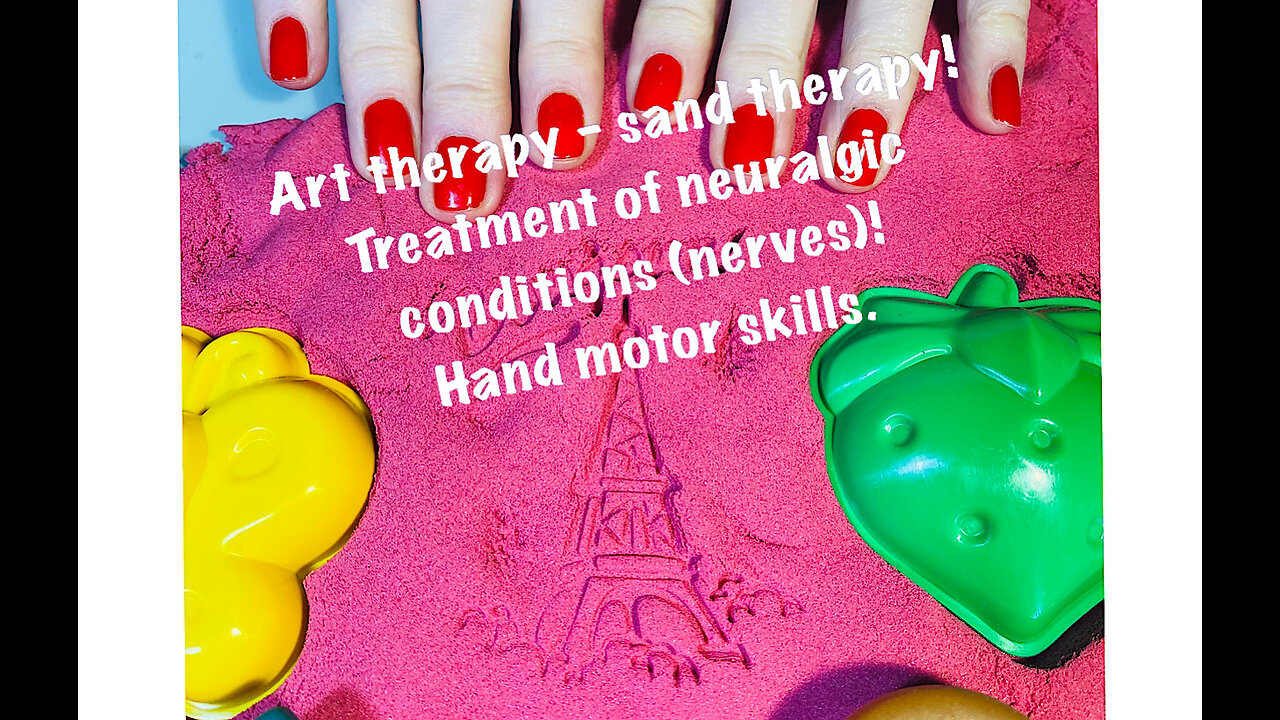Premium Only Content

Art therapy, sand therapy! Treatment of neuralgic conditions (nerves)! Hand motor skills.
Part1. Video for adults over 55 years old and children over 3.5 years old.
Art therapy is one of the areas of psychotherapy that is currently actively developing, and thanks to a number of its advantages, it is finding more and more supporters.
Translated from English, art therapy means treatment with art (art - “art, skill” and therapy - “treatment, therapy”). The term was first used by artist Adrian Hill in 1938. Working in a sanatorium with patients with tuberculosis, he noticed that creativity has a beneficial effect on well-being and allows one to better cope with the disease. Describing his work, he began to use this term, which remains relevant today. Later in its development, art therapy found support from S. Freud and K.G. Jung because it allowed access to the unconscious part of the psyche, which contains the source of internal conflict with its neurotic symptoms. And in 1960, the American Art Therapy Association was created in America.
Currently, art therapy is developing widely, thanks to the opportunities that it opens up for any person who wants to find new ways to understand themselves, regulate their psycho-emotional state, adapt to the world around them (which is becoming more and more complex and makes new demands), and of course, art therapy promotes the development of the ability for closer and deeper relationships with other people, especially its group options.
Most often, this type of psychotherapy is associated with drawing (isotherapy), but this is only one of the areas. Art therapy is, first of all, a creative process of self-expression and therefore everything that, in one form or another, allows us to accomplish this task can be attributed to it. These include music, dance and sand therapy, creating collages, bibliotherapy, color therapy, fairy tale therapy, play therapy, modeling from clay and other materials, creating dolls, working with metaphorical associative cards, as well as many other types.
Art therapy differs from ordinary classes of the corresponding types of art in that it does not require any skills, only desire is important! Here all the work is aimed not at the result, but at the process itself. What is important is spontaneity and openness to creativity, the ability to give up control and evaluation of what is happening and one’s results. As Pablo Picasso wrote: “I would like to draw the way children do - for them there are no laws or proportions, so their drawings are full of expression and life...”
Anyone can practice art therapy, find their own ways of creative self-expression in order to develop their sensitivity to their own needs, better recognize and understand themselves, influence their psycho-emotional state and thereby live a more fulfilling, harmonious and happy life, develop themselves, solve various life problems. difficulties and find resources to overcome them. Art therapy is appropriate at any age and good for any period of life. But it is especially relevant in a neurotic state. Kinetic sand and relaxation sounds. To your health!
-
 4:27:46
4:27:46
Nerdrotic
15 hours ago $57.06 earnedDaredevil Born Again REVIEW, Harry Potter Show DOA, DC HACKED! | Friday Night Tights 344 Paul Chato
167K46 -
 1:15:15
1:15:15
Glenn Greenwald
12 hours agoWeek in Review: Lee Fang and Leighton Woodhouse on Ukraine War and NYT Piece Revealing Tensions within Trump Admin; PLUS: Lee Fang Takes Audience Questions on DOGE and Big Tech | SYSTEM UPDATE #420
104K53 -
 1:03:30
1:03:30
Sarah Westall
14 hours agoMassive Government Overhaul: FBI, CIA, IRS and more to be Gutted w/ Sam Anthony
106K32 -
 1:07:40
1:07:40
IsaacButterfield
14 hours ago $5.37 earnedAustralia Under Attack | Trump's State of the Union | All LGBTQ Cast (W Guest Frenchy)
58.1K15 -
 1:23:37
1:23:37
Edge of Wonder
14 hours agoIs Your Car Collecting Your Biodata? Whistleblower Exposes Dark Agenda
53.1K13 -
 2:08:50
2:08:50
Quite Frankly
17 hours ago"A Rat at HHS, Gene Hackman, Musical Extras" ft. J Gulinello 3/7/25
53.4K15 -
 55:49
55:49
LFA TV
1 day agoGermany Started Two World Wars and Now Wants Nuclear Weapons | TRUMPET DAILY 3.7.25 7PM
45K48 -
 1:34:38
1:34:38
2 MIKES LIVE
13 hours ago2 MIKES LIVE #189 Open Mike Friday (Sort Of)
32.7K -
 1:48:14
1:48:14
Right Side Broadcasting Network
21 hours agoLIVE REPLAY: President Trump Delivers Remarks at The White House Digital Assets Summit - 3/7/25
155K43 -
 2:07:17
2:07:17
The Quartering
18 hours agoTrump Goes Ballistic On Russia & Ukraine Gets Results, Democrat Cringe, FBI Arrests Military Men
150K84